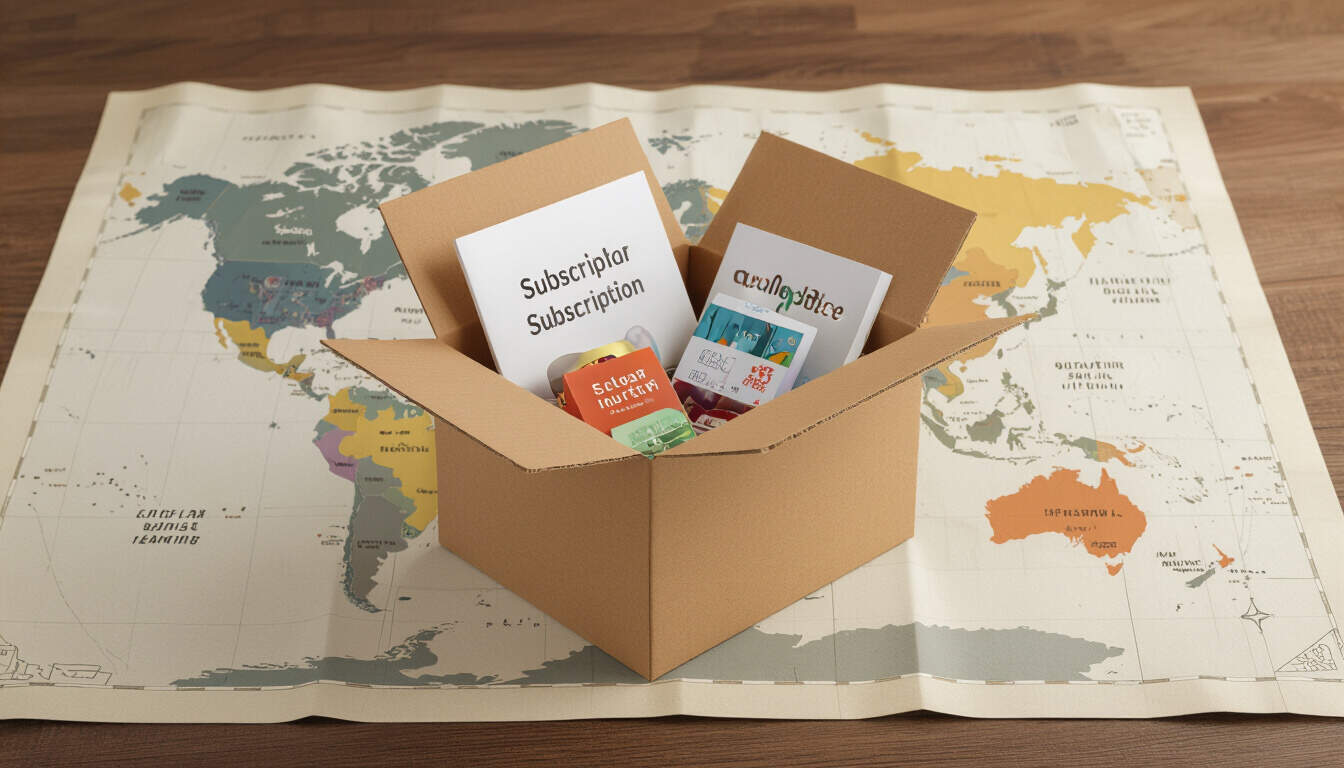Global Shipping in Tiny Subscription Commerce Models
 by Thaddeus Blanda
by Thaddeus Blanda
Explore how tiny subscription commerce models can effectively manage global shipping to reach international customers. This article covers strategies for small businesses to streamline operations, reduce costs, and ensure reliable delivery, enhancing customer satisfaction and business growth.

Tiny subscription commerce models offer a way for small businesses to build steady revenue through recurring deliveries. These models focus on providing regular products to customers, such as monthly boxes of niche items. Global shipping plays a key role in expanding reach beyond local markets.
In subscription setups, reliable shipping ensures that products arrive on time every month. For entrepreneurs, integrating global shipping into these models can open new opportunities. This approach allows businesses to serve customers worldwide, increasing sales potential.
One main benefit is the ability to access diverse markets. Small business owners can use e-commerce platforms to handle international orders. By partnering with shipping providers, they maintain consistent delivery schedules. This consistency builds trust with subscribers who expect their boxes promptly.
To start, businesses should assess shipping options. Choosing carriers that offer tracking and insurance helps mitigate risks. For instance, using services from major providers can simplify customs processes. Entrepreneurs need to consider costs, as international shipping fees vary by region.
Another aspect is packaging. Effective packaging protects items during transit and reduces damage claims. Businesses in tiny subscription models often use eco-friendly materials to appeal to environmentally conscious consumers. This practice not only saves costs but also enhances brand image.
Key Strategies for Implementation
When setting up global shipping for subscription services, follow these steps:
- Research shipping zones and regulations for target countries.
- Negotiate rates with carriers to keep expenses low.
- Integrate automated systems for order fulfillment.
These strategies help streamline operations. For example, automating order processing reduces manual errors. Small owners can use software tools that sync with e-commerce sites.
Challenges may arise, such as delays due to customs. Businesses should communicate clearly with customers about potential issues. Providing updates via email keeps subscribers informed. This transparency maintains satisfaction levels.
In practice, a coffee subscription service might ship beans globally. By optimizing routes, they ensure fresh delivery. This model demonstrates how subscription commerce adapts to international demands.
Cost Management Techniques
Managing expenses is crucial for tiny models. Businesses can bundle shipping into subscription fees to offset costs. Offering tiered plans, like basic and premium options, allows flexibility. Premium tiers might include faster shipping for an extra fee.
Tracking tools provide insights into shipping performance. Owners can analyze data to identify bottlenecks. For instance, high return rates in certain regions signal the need for better packaging.
Sustainability is also important. Using carbon-neutral shipping options appeals to modern consumers. This aligns with the values of many e-commerce enthusiasts who prefer ethical practices.
Building Customer Loyalty
Global shipping in subscription models fosters loyalty. Customers value convenience and reliability. When businesses deliver consistently, they encourage renewals. Positive experiences lead to word-of-mouth recommendations, driving organic growth.
Personalization adds value. Tailoring shipments based on customer preferences enhances the experience. For example, a beauty product subscription might adjust items based on feedback. This level of service sets businesses apart in competitive markets.
Future Trends
As e-commerce grows, tiny subscription models will evolve. Innovations in logistics, like drone delivery, could transform shipping. Businesses that stay updated will gain an edge. Embracing technology ensures long-term success.
In summary, incorporating global shipping into tiny subscription commerce models requires planning and adaptation. By focusing on efficiency and customer needs, small businesses can thrive in this space.
